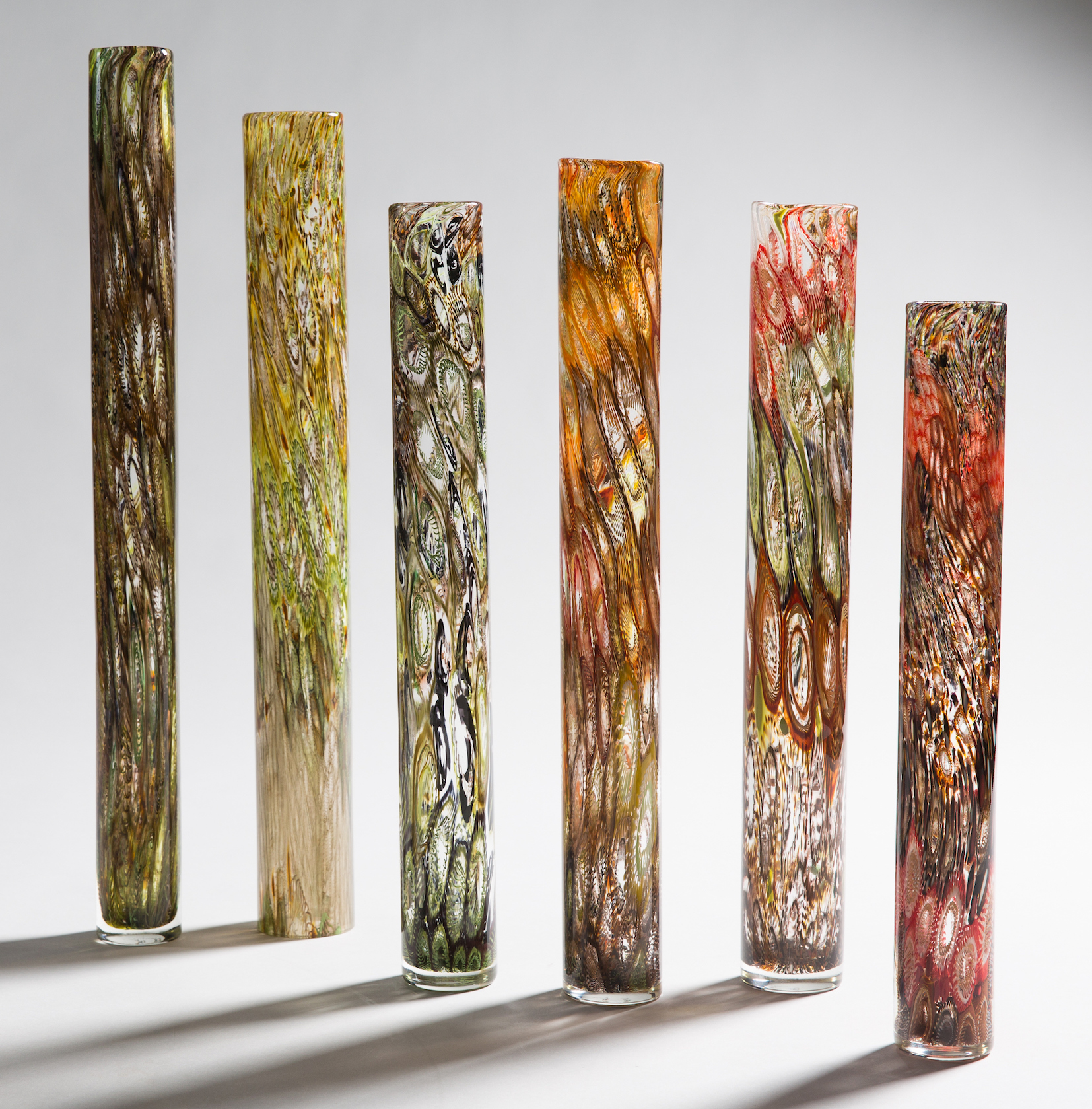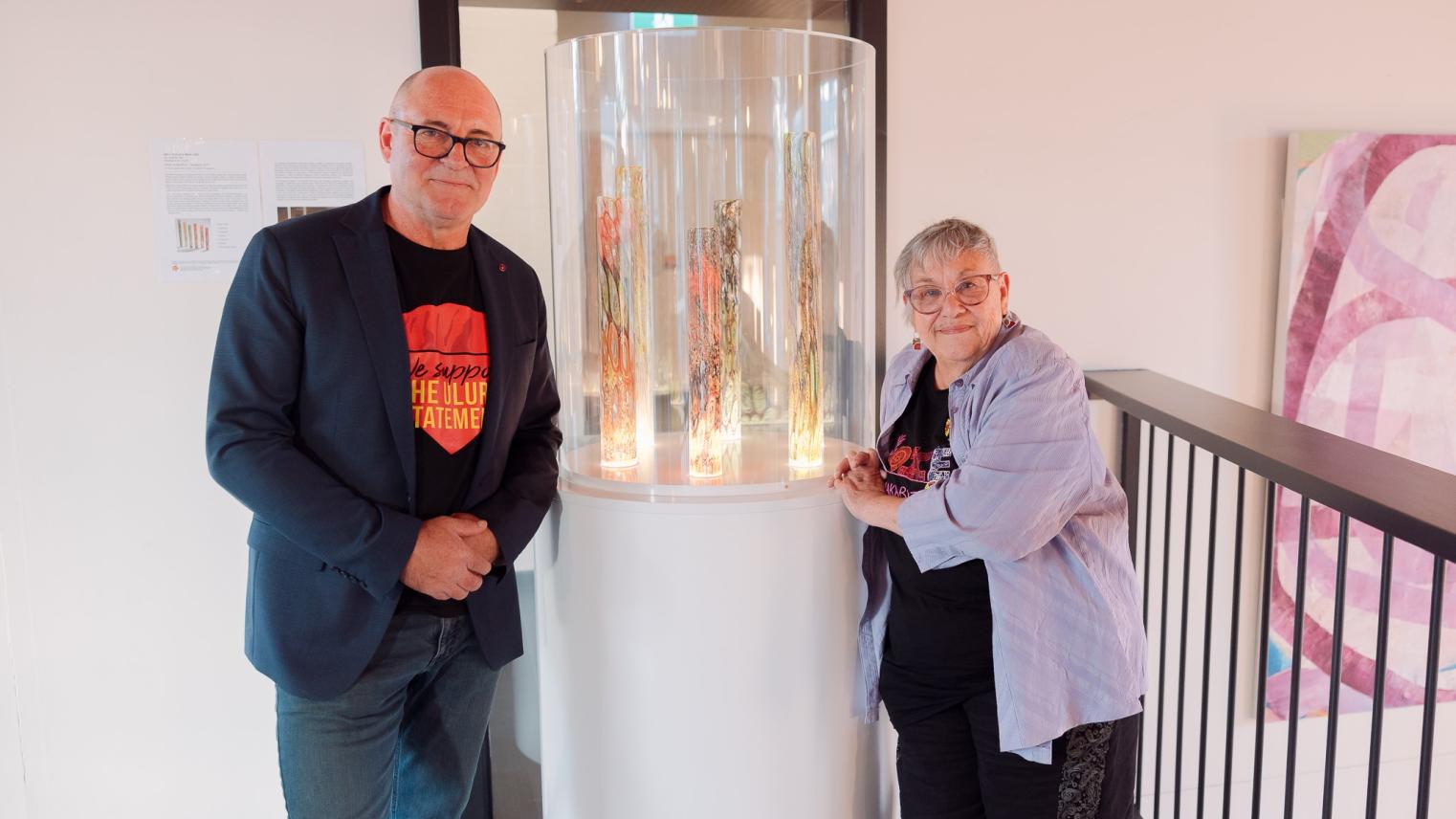As an Aboriginal (Arrernte) artist, storytelling is the heart of my artistic practice. In 2014 I created my first series of hot blown glass cylindrical Voice Cores, inspired by a long held fascination with the capacity of scientific cores sunk into the earth to access a place’s deep time through the analysis of palaeoecological spores, pollen and sediments.
In 2019 I created another series of Voice Cores (now in the collection of the ANU) based on the concept that they represent those First Aboriginal Stories of Place as if they were core samples sunk deep into the earth to extract the shapes, sounds, syllables, vowels and consonants of the most ancient and highly evolved languages ever spoken, the first stories, songs, ceremonies. Each cylinder represents, and is named for a specific grouping of First Stories, Songs and Ceremonies and the glass murrine created specifically for each one were designed to reflect the characteristics of those stories, the land and flora, and the sounds of the voices that first spoke them.


Prof Simon Haberle and me with Voice Cores series 2 on display in the Coombs Building, ANU, 2023.
In this residency I have the opportunity to take these ideas to the next level. I will work with palaeoecologist Prof. Simon Haberle in the School of Language, History and Culture, Centre for Asia Pacific Studies at the ANU to access the palaeo labs and micro-photographic databases that hold the deep time secrets beneath my paternal Grandmother’s Lower Southern Arrernte country and my paternal Chinese Grandfather’s south eastern coastal area, Amoy now called Xiamen.
My intention is to research the palaeo stories beneath my Ancestors’ footprints. This is a huge challenge, as the time I have already spent with Simon looking at the palaeo fossil records held by the ANU has revealed a collection of over 5 million images from across Australia, Asia and the Pacific. And the first challenge is to narrow my focus to the sets of fossil forms most directly relevant to those two target areas.
I have been totally captured by the micro-photographic images of pollen, spores, diatoms, phytoliths, charcoal fossil forms, visually intricate, amazing, beautiful! The stuff of professional addiction for any visual artist, and especially one challenging the technical boundaries of hot glass, as I am. So I have begun by looking at what each of these fossils are, plant or non-plant, and what they contribute to the archeological evolution of these places. I am open minded as to what palaeo stories I will uncover as this is a new exploration for me, and my Ancestors’ places of origin were ecologically very different from each other when they were each born.
On a practical level, Simon and I have worked out the logisitcs of my access to the labs and databases over the course of my residency, setting up the necessary ANU ID, swipe card access, room to work, official status while I’m there – Hon. Visiting Research Fellow – wow! Great title for an Artist in Residence who is bent on extracting, abstracting, immersion and re-interpreting elements of the palaeo-ecological record.
I have given Simon a list of what I need from him as my mentor including field practices and processes for extracting deep time material, how to search such a huge database effectively for my target areas, and the loan of a mac laptop because mine has been declared ‘vintage’ and no longer repairable if something goes wrong. I will also be going into the field with PhD students and staff to get a hands-on experience of field practices and processes, which I am very excited about.